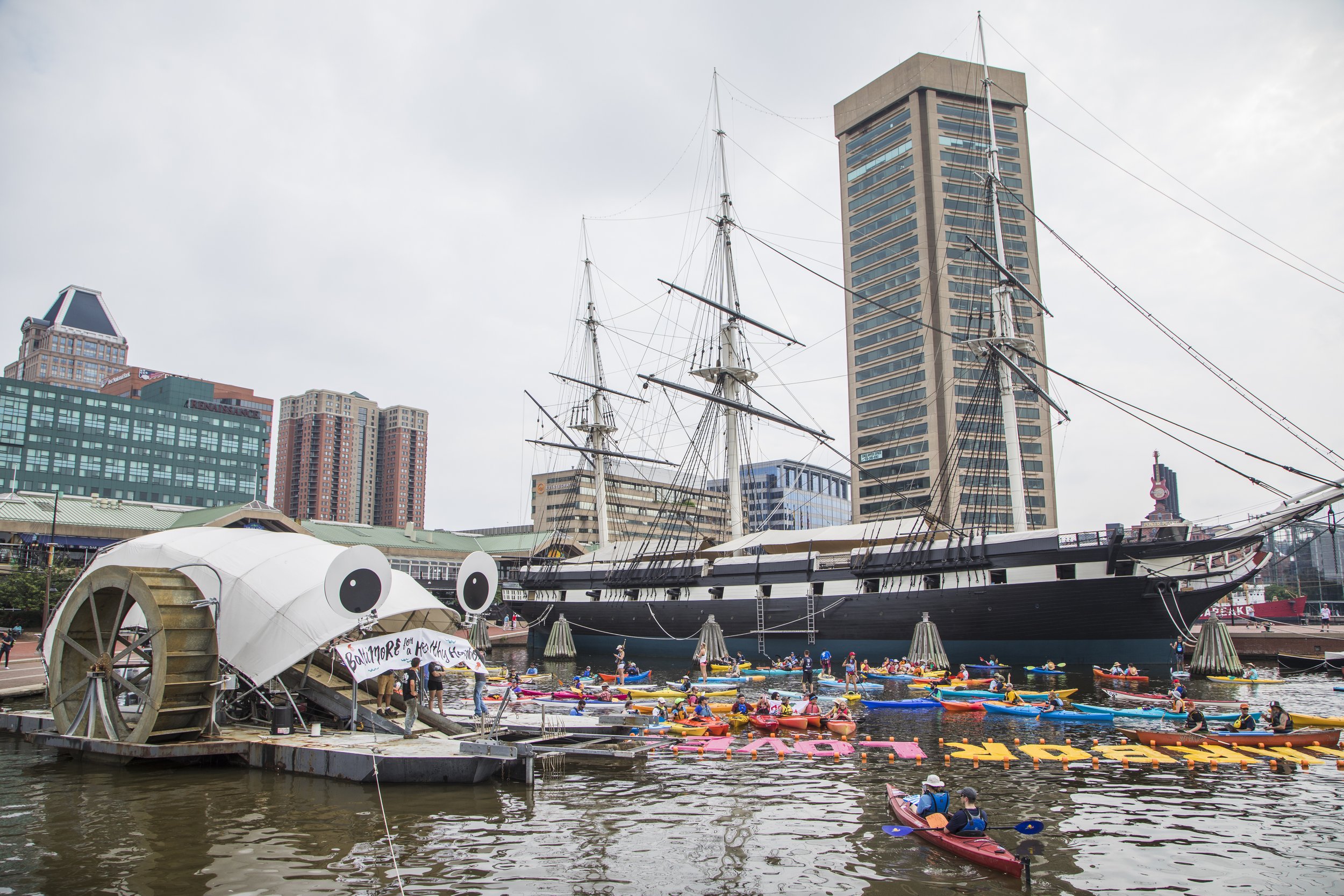
Frequently Asked Questions

-
We get this question a lot. Before you get started, remember that trash wheels require funding, partnerships, a whole lot of support to build. Citizens who want one in their city need to work on bringing people together locally to organize a campaign to fund, build, and support one.
If you are looking for more information about building a water wheel on your local waterway, the next step is to contact Clearwater Mills, the inventor of the trash wheel. They can help survey waterways for suitability and help organizations better understand the costs and other needs associated with building a trash wheel.
-
You’ve travelled to watch Mr. Trash Wheel eating trash or you visited his webcam .. yet, he’s not working. What’s going on? Mr. Trash Wheel is only switched “on” when there is trash in the water for him to eat. Mr. Trash Wheel is busiest during and after rainstorms, which is when trash and debris is washed into storm drains, rivers and streams and eventually into Mr. Trash Wheel’s mouth.
-
The Trash Wheels operate at a very low speed when turned on. Their rakes and conveyor belt move at a slow pace that deters fish, ducks, etc. away from the machine, preventing them from being entangled or harmed.

Waterfront Partnership of Baltimore Inc. is a non-profit organization dedicated to enhancing and promoting the waterfront district, parks, and public spaces. We create welcoming programs, events, and recreational experiences while working toward a healthy harbor. We are committed to fostering connections among diverse communities to ensure equitable access to our blue and green space

